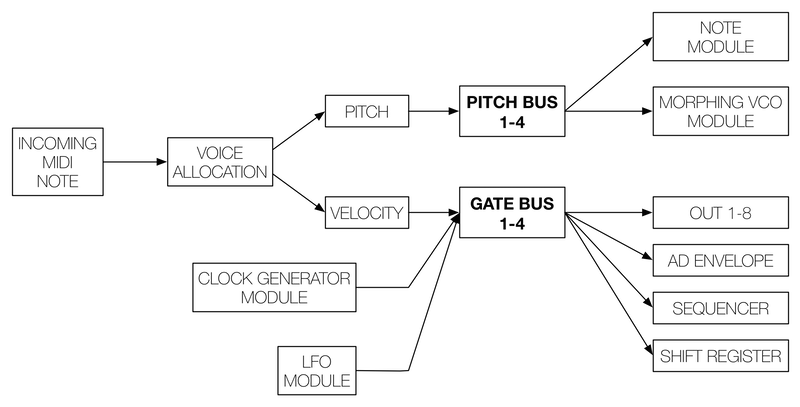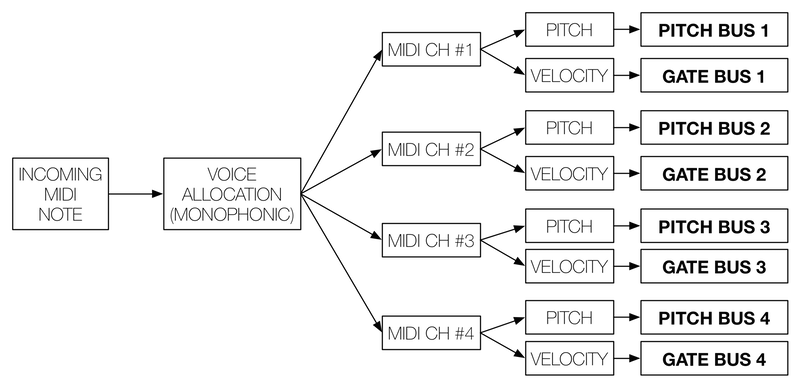Voicing Modes

CV Toolkit works with 3 different voicing modes: Monophonic, Polyphonic, and Paraphonic.
These different modes let you control how CV Toolkit will translate and allocate incoming MIDI Notes.
Monophonic

The monophonic mode useful for creating 4 independent mono voices.
It receives MIDI notes from the first 4 channels of the selected MIDI Input device and routes them to the correspondent 4 channels of the Gate and Pitch buses.
Polyphonic

The polyphonic mode is great for creating complete polyphonic patches. It receives up to 4 simultaneous notes from first MIDI channel of the selected MIDI Input device and allocates them to the 4 channels of the Gate and Pitch buses.
The first note is sent to Channel 1 of the CV Buses, the second note is sent to Channel 2 and so on.
Keep in mind that, in this mode, the channels depend on the previous channel in order to be active (i.e. Channel 2 can only be active while Channel 1 is active as well).
The way polyphony works in CV Toolkit may differ from most polyphonic synthesizers. Instead of cycling through the four channels available in the CV Buses, CV Toolkit always routes note #1 to Channel #1.
Paraphonic

The paraphonic mode was inspired by synthezisers such as the Moog Sub 37 and the DSI Pro 2 and it's great for creating polyphonic voices without the need for individual envelopes, VCAs, filters, etc.
This mode works similarly to the polyphonic mode except that it combines all the gate signals from all the incoming notes into Gate Bus channels #1 and #2.
The difference between Gate Bus channel #1 and #2 is that they offer different legato modes (Retrigger and Last Note, respectively).
You may want to use, for example, Channel #1 for gating your main VCA and channel #2 for triggering another envelope going to your VCF CV input (which you'd want to be triggered whenever you played a new note).